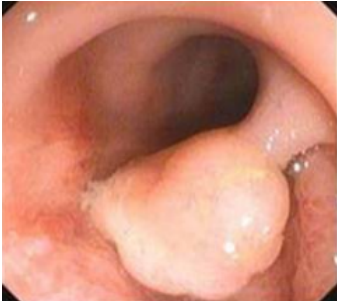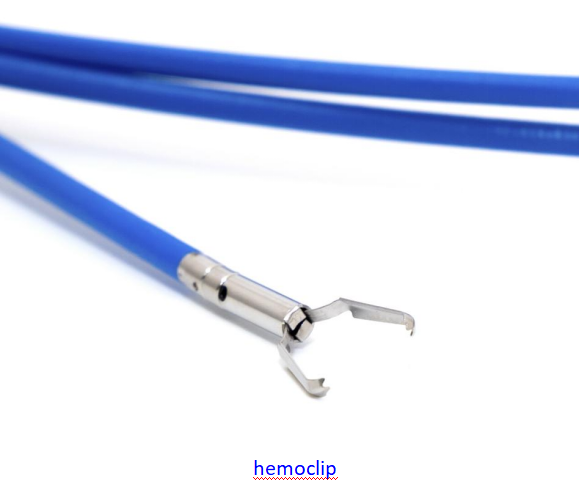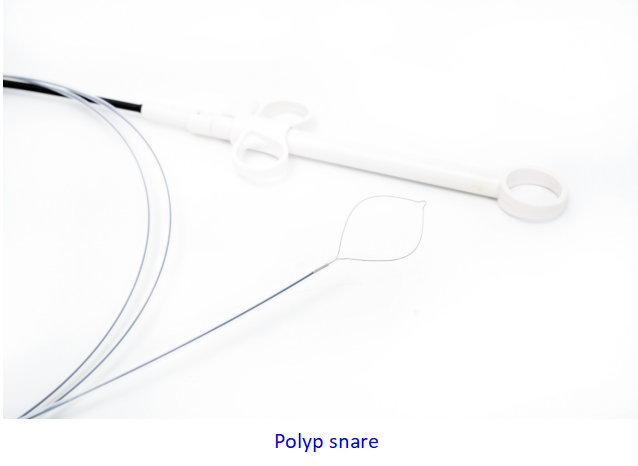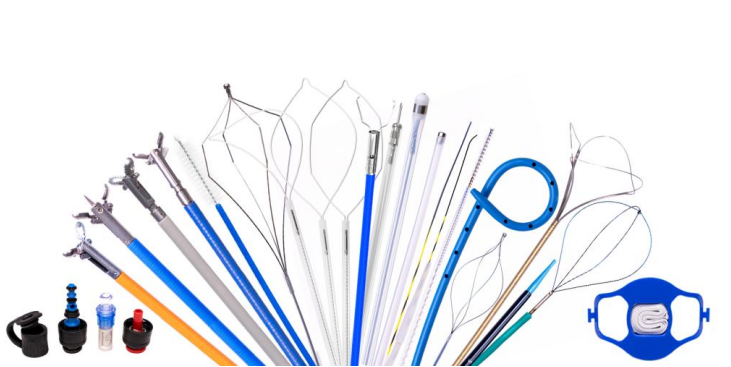- Time:2025-01-13
- View:164
- Font:


- Author:admin
When faced with stalk polyposis, higher requirements are placed on endoscopists due to the anatomical characteristics and operational difficulties of the lesion.
This article explains how to improve endoscopic operation skills and reduce postoperative complications through countermeasures such as position adjustment and preventive ligation.
1. Adaptive lesions of HSP: pedunculated lesions
For stem lesions, the larger the head of the lesion, the more significant the influence of gravity is, which often makes it difficult for the snare to accurately cover the pedicle. In this case, position adjustment can be used to improve the field of view and find the best position for the operation, thereby ensuring the accuracy of the operation.

2. Risk of bleeding and the importance of preventive ligation
The stem of pedunculated lesions is usually accompanied by thick blood vessels, and direct resection may cause massive bleeding and increase the difficulty of hemostasis.Therefore, prophylactic pedicle ligation is recommended before resection.
Recommendations for ligation methods
Using Clip
Long clips should be placed as close to the base of the pedicle as possible to facilitate subsequent snare operations. In addition, before resection, it should be ensured that the lesion turns dark red due to blood blockage, otherwise additional clips should be added to further block blood flow.
Note: Avoid energizing the snare and clip during resection, as this may result in a risk of perforation.

Using a Snare
The retention of a nylon loop can completely ligate the pedicle mechanically, and can effectively block bleeding even if the pedicle is relatively thick.
Operating techniques include:
1. Expand the nylon ring to a size slightly larger than the lesion diameter (avoid over-expansion);
2. Use endoscopy to pass the lesion head through the nylon loop;
3. After confirming that the nylon ring is at the base of the pedicle, carefully tighten the pedicle and complete the release operation.

Resection precautions
A. Make sure the nylon loop does not get caught in the surrounding tissue.
B. If you are worried that the indwelling nylon ring will fall off, you can add a clip at its base or at the resection site to prevent postoperative bleeding.
3. Specific operation steps
(1) Tips for using clamps
A long clip is preferred and is placed at the base of the pedicle, ensuring that the clip does not interfere with the operation of the snare.
Confirm that the lesion has turned dark red due to blood obstruction before performing the resection operation.
(2) Tips for using the retention nylon ring
1. Expand the nylon ring to a size slightly larger than the lesion diameter to avoid over-opening.
2. Use the endoscope to pass the lesion head through the nylon loop and make sure the nylon loop is intact.
Completely surround the pedicle.
3. Slowly tighten the nylon loop and carefully confirm that no surrounding tissue is involved.
4. After pre-fixation, finally confirm the position and complete the ligation of the nylon loop.
(3) Prevention of postoperative bleeding
To prevent the early fall of the indwelling nylon ring, additional clips can be added to the base of the resection to further reduce the risk of postoperative bleeding.
Summary and suggestions
Solution to the influence of gravity: By adjusting the body position, the field of vision can be optimized and the operation can be facilitated. Preventive ligation: Whether using a clip or a nylon ring, it can effectively reduce the risk of bleeding during and after surgery. Accurate operation and review: Strictly follow the operation process and review in time after surgery to ensure that the lesion is completely removed and there are no complications.
We, Jiangxi Zhuoruihua Medical Instrument Co.,Ltd., is a manufacturer in China specializing in the endoscopic consumables, such as biopsy forceps, hemoclip, polyp snare, sclerotherapy needle, spray catheter, cytology brushes, guidewire, stone retrieval basket, nasal biliary drainage catheter etc. which are widely used in EMR, ESD, ERCP. Our products are CE certified, and our plants are ISO certified. Our goods have been exported to Europe, North America, Middle East and part of Asia, and widely obtains the customer of the recognition and praise!

Biopsy forceps:
https://www.zrhendoscopy.com/single-use-endoscopic-tissue-biopsy-forceps-with-graduation-product/
Hemoclip
https://www.zrhendoscopy.com/disposable-rotatable-endoscopic-hemoclip-for-gastroscopy-use-product/
polyp snare
sclerotherapy needle
Spray catheter
cytology brushes
https://www.zrhendoscopy.com/endoscopy-accessories-disposable-endoscopic-cytology-brush-for-gastrointestinal-tract-product/
Guidewire
stone retrieval basket
https://www.zrhendoscopy.com/ercp-instrument-gallstone-stone-retrieval-basket-for-endoscopy-product/
nasal biliary drainage catheter
EMR
https://www.zrhendoscopy.com/emresd/
ESD
https://www.zrhendoscopy.com/emresd/
ERCP
https://www.zrhendoscopy.com/ercp/











